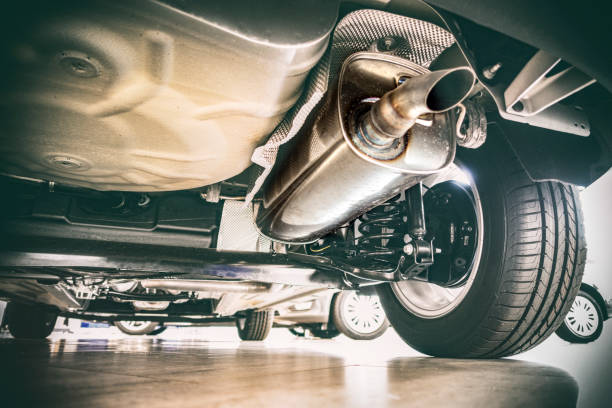April 23, 2024
Can a larger exhaust improve performance?
Yes, a larger exhaust can improve the performance of a vehicle in several ways. Here are some key benefits:
- Increased Horsepower and Torque: A larger exhaust allows for better airflow, reducing back pressure and enabling the engine to expel exhaust gases more efficiently. This can lead to an increase in horsepower and torque.
- Improved Fuel Efficiency: With a more efficient exhaust system, the engine doesn’t have to work as hard to push out exhaust gases. This can lead to better fuel economy.
- Enhanced Engine Sound: A larger exhaust can produce a deeper, more aggressive engine sound, which many car enthusiasts find appealing.
- Reduced Engine Strain: By decreasing back pressure, a larger exhaust system can help reduce strain on the engine, potentially extending its lifespan.
- Better Performance at Higher RPMs: High-performance vehicles, especially those driven at higher RPMs, benefit from larger exhausts as they allow for quicker evacuation of exhaust gases, maintaining optimal performance.
However, it’s important to note that simply installing a larger exhaust won’t automatically result in significant performance gains. The entire exhaust system, including the headers, catalytic converter, and muffler, should be matched to the vehicle’s engine and performance goals. Additionally, tuning the engine after exhaust modifications can help maximize the benefits.

What makes a good exhaust?
A good exhaust system is essential for optimizing a vehicle’s performance, sound, and efficiency. Here are the key characteristics of a good exhaust system:
- Material Quality:
- Stainless Steel: Offers excellent durability and resistance to rust and corrosion.
- Aluminized Steel: More affordable but still provides decent corrosion resistance.
- Pipe Diameter:
- Proper sizing is crucial. Too large can reduce back pressure excessively, leading to a loss of low-end torque, while too small can restrict airflow.
- The diameter should match the engine’s requirements and intended performance enhancements.
- Mandrel Bends:
- Mandrel bending ensures smooth, unrestricted airflow through the exhaust pipes, improving efficiency and performance.
- Avoids crimping and deformation, maintaining consistent pipe diameter.
- Exhaust Headers:
- High-quality headers improve the exhaust flow out of the engine, reducing back pressure and enhancing performance.
- Equal-length headers can optimize performance by ensuring exhaust pulses arrive at the collector evenly.
- Catalytic Converters:
- High-flow catalytic converters reduce emissions without significantly restricting airflow, maintaining environmental compliance and performance.
- Mufflers:
- Performance mufflers balance noise reduction with minimal airflow restriction.
- Different muffler designs (straight-through, chambered) can tailor the exhaust sound to preference without compromising performance.
- Fit and Compatibility:
- A well-designed exhaust system fits properly with the vehicle’s make and model, avoiding leaks and ensuring optimal performance.
- Compatibility with other performance modifications is also important.
- Weight:
- Lighter materials (e.g., titanium) can reduce overall vehicle weight, contributing to improved performance, especially in high-performance and racing applications.
- Sound Quality:
- A good exhaust system produces a desirable sound without being excessively loud or droning.
- The exhaust note should match the vehicle’s character and owner’s preference.
- Heat Management:
- Effective heat dissipation materials and designs can prevent excessive heat build-up, protecting other components and improving overall efficiency.
- Ease of Installation:
- A good exhaust system should be relatively easy to install, with precise fittings and clear instructions, minimizing the need for extensive modifications.
By considering these factors, you can select an exhaust system that enhances your vehicle’s performance, sound, and efficiency while ensuring durability and compliance with emissions standards.
